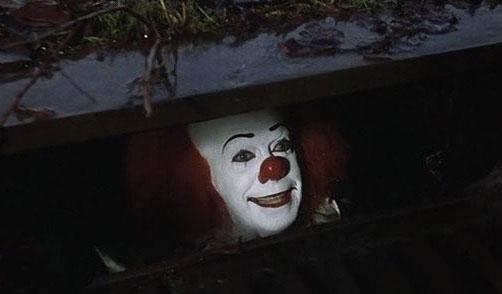Last year I had the opportunity to do something I would never have imagined – to taste a whisky more than fifty years old. It was the last day of the Whisky Show in London. I was standing next to one of the independent bottler’s kiosks, Gordon & McPhail to be exact, when I heard a cork being pulled. “We need to finish the doses left in this bottle”, the exhibitor said to his colleague. It was a rare 1949 Glen Grant, bottled in 2007. Around me were half a dozen whisky lovers, who like me, were Lucky enough to be in the right place at the right time.
I held out my little glass. How delicious, I heard from one of the enthusiasts. Wow, I really think it’s one of the best I’ve ever tasted, feel that complexity, said another. A lady in front of me however, didn’t seem impressed. Interesting, thank you, she smiled at the exhibitor. I had to interrupt her: How did you like the whisky? I find it incredible what fifty years can do to a distillate. Again, she just smiled with all that English enigmatic elegance.
I took another sip and thought. Yes, the opportunity to taste it like this was incredible. That Glen Grant was among the most different I had ever tasted. It really was very complex. There was a dry taste that I had never felt to that intensity in any other whisky. There was also a vinous finish, but far from being sweet. In fact, it wasn’t sweet at all – it was almost white pepper with a little something sour – tannin, definitely tannin and really interesting. However, it was far from being one of my favourite whiskies, despite the geeky fascination. At three thousand two hundred pounds a bottle, I can safely say I would pass.

Don’t judge me yet. In fact, that experience was just the difference between the extraordinary and the amazingly good. The Glen Grant was extraordinary because there was nothing usual about it. It was far from being your average whisky – its characteristics made it stand out. Yet it wasn’t as unbelievably good as I might have expected. Indeed, there are much more ordinary whiskies that emulate what can be considered incredibly good.
Then I started thinking. If an expensive whisky that had been stored so long in a barrel had that extraordinary, but not incredible, flavour, what justifies the price? I decided to do some research.
Well, the first reason is simple: The law of supply and demand. The stock of very mature single malts is increasingly scarce and demand is growing. Due to this, it’s only natural that prices will go up. An expensive whisky becomes even more expensive. In other words, there are few bottles available, but many mouths eager to try the precious nectar. It’s like putting a price on an experience. More exclusive experiences cost more because we all want exclusive experiences. They make for good stories.
More matured whiskies really yield different experiences. The reason is scientific. More time in the barrel means more oxidation. I have already addressed this issue when talking about the shelf life of an open bottle of whisky. It’s Worth remembering however, that oxygen, present in the air, reacts with certain components of the beverage. It’s esters, thiols, and phenols that provide some of those enchanting aromas in the exact dose and that lose or gain strength with oxidation depending on their nature.
While whiskies mature in their barrels, they oxidise. They remain in constant contact with the air because of the slack in the barrels and this directly influences their taste. Other tactics are used, of course, to accelerate maturation, such as the use of quarter casks, the taste produced by decades within a barrel cannot be simulated in any other way. This, together with the transfer of tastes from the barrel guarantees a different experience – the chance to taste what happens to a whisky that has spent almost an entire human life inside a cask. The elegant English lady at the start of this post was referring to that.
The only problem is that whisky evaporates during the maturing process. This is another reason why the stock is scarce. This phenomena is called Angel’s Share. The evaporation rate varies from distillery to distillery, but for Scottish whiskies the average is 2%. Therefore, a cask that has rested for a long time yields fewer bottles and although in this case geometric progression helps, it is far from negligible. If you do the maths, after about twenty-one years, only 40-50% of the total volume of whisky remains inside it. Glen Grant is an expensive whisky because it makes up for all the Glen Grant bottles that disappeared into thin air so it could exist.

There is also the question of the cost of opportunity. The majority of casks are not exactly small, portable objects. One cask therefore takes up the space of another, which could have a smaller cycle. In addition, the distillery itself may decide to blend a very mature whisky with a younger one to achieve a certain flavour. After all, as you already know, because you follow the Bottled Dog, the age on the label is of the youngest component – in a 12-year-old whisky, for example, there may be a 25-year-old one.
Taxes also need to be added. The distilleries pay taxes on the distillate that matures in their barrels. The longer it stays there, the more taxes must be paid on a barrel just sitting there without generating revenue. Speaking of which, the 2% evaporation quota was agreed due to tax payment. According to British law, distilleries may discount 2% of the annual volume of its stock in maturity for the Angel’s Roost. It’s not really 2% for all producers – it’s a legal twist to simplify tax collection.
There is also a factor that has nothing to do with physics or legislation. A factor that dispenses logic and gears towards emotion. It is luxury. Very matured whiskies are objects of luxury. An Aston Martin or Ferrari is worth more than the combination of its parts. Included in the price is the exclusivity, the brand and – of course – the expertise and quality assurance that we expect of such products. Did you really think that producing a fifty-eight-year-old whisky was easy? It requires careful attention to evaporation, constant measurements of alcoholic strength and total control of the conditions surrounding the barrel.
When you buy a luxury item, in theory you buy quality, durability, expertise, design or whatever it is that sets it apart from others. In brief, it’s not just a liquid you’re buying. It’s desire. There it is – mature whiskies are not necessarily better. However, they are infinitely rarer for a number of economic and natural factors. These factors, which increase the power of luxury and exclusivity, make them more expensive. Expensive and extremely sought after.
Wow. I wish I had a bottle of Glen Grant 1949.

